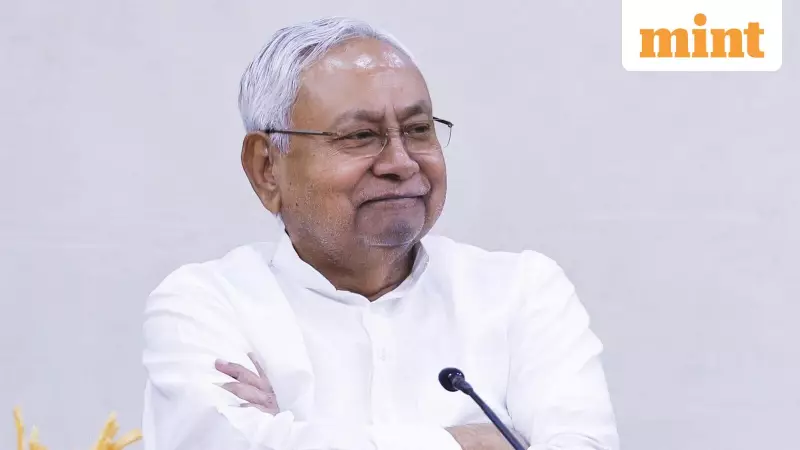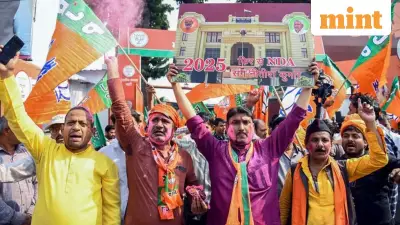
The Unshakeable Reign of Nitish Kumar
As Nitish Kumar prepares to take oath as Chief Minister for the remarkable tenth time, political observers across India are analyzing the enduring dominance of this seasoned leader. The question that echoes through Bihar's political corridors is straightforward: how does a politician who never secured an outright majority become the state's indispensable power center?
The Political Knight's Unique Moves
Back in 2009, during a candid conversation with a close confidant of Nitish Kumar, the secret to his political longevity was revealed through a chess analogy. "On the chessboard of politics, Nitish babu moves like a knight - capable of advancing two and half steps forward while simultaneously stepping backward," the associate explained. This unique mobility has defined his career.
The confidant emphasized that even those closest to the Chief Minister cannot predict his next move. Nitish maintains political decorum and avoids personal attacks on opponents, making both allies cautious and rivals hopeful. He follows Chanakya's principle that politics has no permanent friends or enemies, always keeping communication channels open with opposing camps.
Three Decades of Political Evolution
Nitish Kumar's journey to becoming Bihar's longest-serving Chief Minister began thirty-one years ago. In 1994, he co-founded the Samata Party with firebrand socialist George Fernandes. The party's first major test came during the 1995 state assembly elections where Nitish was declared chief ministerial candidate but managed to win only 7 seats with 7.1% vote share.
By 2000, the Samata Party improved its position significantly, securing 34 seats while BJP won 67. Nitish briefly became Chief Minister, but his government collapsed within a week. This experience taught him a crucial lesson: to break Lalu Prasad Yadav's political dominance, he needed stronger grassroots connection.
The turning point came in 2005 when Nitish undertook a comprehensive Nyay Yatra across Bihar. Earlier, in 2003, he had transformed his political vehicle by forming Janata Dal United (JDU) with Fernandes. The National Democratic Alliance formally declared him their CM candidate, setting the stage for his eventual rise.
In the February 2005 elections, JDU won 55 seats and BJP secured 37, but the alliance fell short of majority when Ram Vilas Paswan refused support. After President's Rule, fresh elections in November 2005 gave JDU 88 seats and BJP 55, providing Nitish with the comfortable majority he needed to begin his transformative rule.
The Alliance Dance and Governance Record
Over the past two decades, Nitish Kumar has demonstrated remarkable flexibility in political partnerships. He has fought elections alongside Rashtriya Janata Dal and emerged victorious, though the alliance eventually unraveled due to fundamental differences. In 2022, he joined the Mahagathbandhan with RJD and Congress, but this coalition couldn't complete its second anniversary.
Despite appearances, Nitish isn't merely a power-hungry turncoat. After his party's poor performance in 2014, he voluntarily resigned and promoted Jitin Ram Manjhi as Bihar's first Dalit Chief Minister. Though their relationship eventually soured, this move demonstrated his commitment to social empowerment.
Throughout his career, BJP has remained his most stable and trusted ally. Nitish understands that controlling Patna's secretariat is essential for implementing his vision, and he has used this power to drive significant changes across Bihar.
Development Legacy and Unfinished Agenda
Nitish Kumar's governance achievements are substantial and widely recognized. His initiatives for women empowerment represent a landmark in Bihar's history. Under his leadership, women now constitute 37% of Bihar's police force, creating unprecedented employment opportunities and changing gender dynamics in law enforcement.
He pioneered policies providing every family with a home and every home with piped water connection. The prohibition policy, while financially costly for the state exchequer, has been widely appreciated by rural women who see it as protective measure for families.
Significant improvements in road infrastructure and law and order situation mark his administrative tenure. By focusing on empowering mahadalits and extremely backward communities, he has strategically expanded his political base while addressing historical social inequalities.
Remarkably, despite two decades in power, Nitish Kumar maintains his "Mr. Clean" image in a political landscape often marred by corruption allegations. However, significant challenges remain unaddressed. Bihar continues to rank at the bottom in per-capita income nationally, and the state has struggled to attract back industries that left during Lalu Prasad Yadav's era.
As he prepares for another term, the critical question remains: can the aging statesman effectively tackle Bihar's migration crisis and create sufficient employment opportunities to retain the state's youth?
For now, as political analysts and future students of political science study the "Nitish phenomenon," the focus shifts to congratulating the master strategist on his unprecedented tenth term while watching how he addresses Bihar's persistent development challenges.





